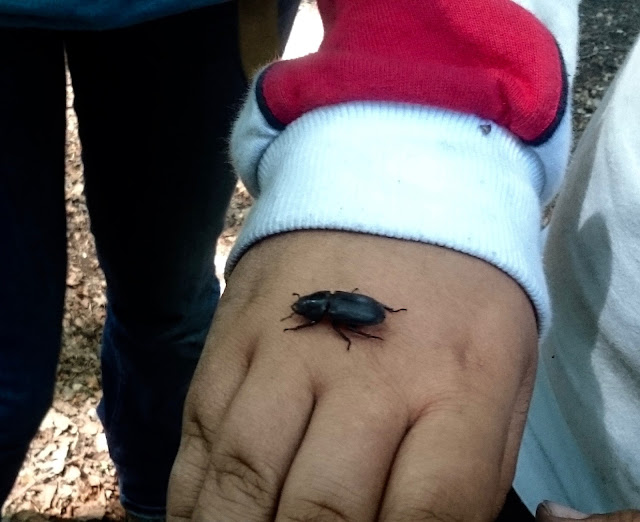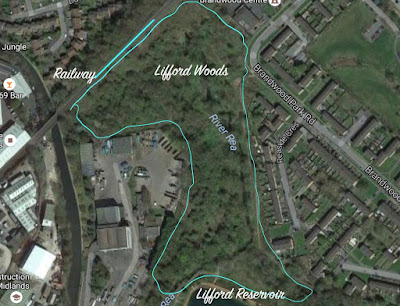Beetles we have found and what do we know?
 |
`Lesser Stag Beetle found at the base of a Beech Tree at Holders WoodsInformation fromhttp://www.wildlifetrusts.org/species/lesser-stag-beetleAbout
The Lesser Stag Beetle may be smaller than its famous cousin, but it is still a relatively large beetle with large jaws. Adults can be found in woodland, parks and along hedgerows during the summer, often resting in the sun on tree trunks. The larvae depend on old trees and rotting wood to live in and feed on, and both adults and larvae can be found in the decaying wood of Ash, Beech and apple. The adults can be seen flying about at night, sometimes coming to outside lights. They mate and lay their eggs in a suitable piece of decaying wood.
How to identify
The Lesser Stag Beetle is a large beetle with a broad head and large jaws. It can be distinguished from the male Stag Beetle by its smaller mandibles and distinctively knobbed antennae, and from the small-jawed female Stag Beetle by its all-black wing cases.
Where to find it
Found across England and Wales.
|
 |
| Rhinoceros Beetle found in old rotting trunk at Holders Woods
Information from - http://www.uksafari.com/rhino.htm
Name: Sinodendron cylindricum
Months seen: May to October
Habitat: Woodlands, hedgerows and parks Food: Tree sap. The larvae feed on rotting wood Special features: Rhinoceros Beetles have shiny blue-black bodies which are glossy and very pitted. The males are easily recognised by the rhinoceros horn-like projection on their heads. Female Rhinoceros Beetles have just a small bump (tubercle). They are eqipped with wings and are able to fly. Although mostly nocturnal, they can sometimes be found in the daytime sunning themselves on deciduous trees or rotting stumps. They have a preference for Beech trees. Rhinoceros Beetles are sometimes called 'Least Stag Beetles'. |



Comments
Post a Comment